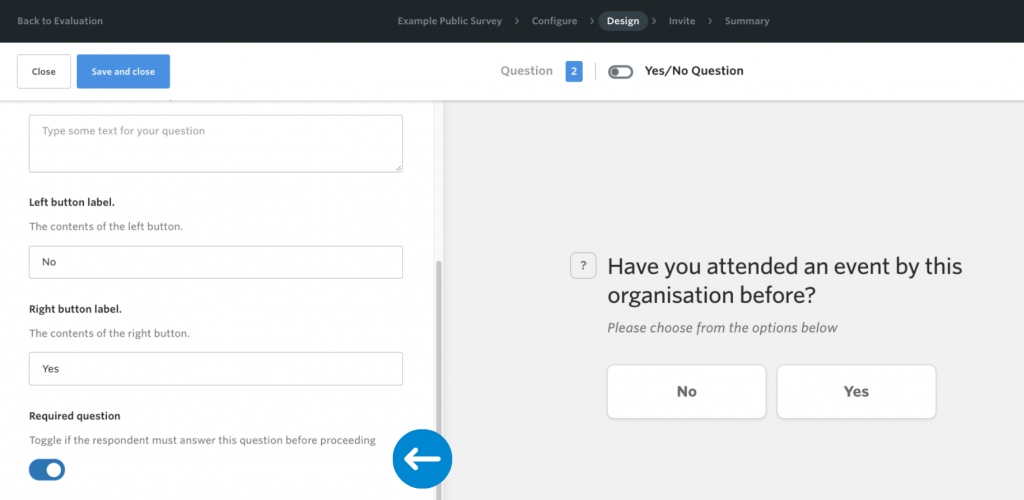Required questions
You have the option to make any type of survey content a required question, meaning that respondents can not skip the question or complete the survey without providing an answer.
In the question design page, you can select if a question will need to be answered by the respondent in order to continue with the remainder of the survey.

We still recommend keeping as many questions as possible non-compulsory as we find that the overall response rate and validity of responses can be better if respondents have the option to skip when desired.
By making the majority of questions in your survey mandatory, it can lead to frustration and increase the likelihood of respondents abandoning the survey altogether. Additionally, the quality of responses may be compromised if compulsory questions do not include suitable options.
We understand that it may feel tempting to make questions compulsory in your survey as the data you are collecting is very helpful to your organisation. However, it’s important to consider the overall survey design and to create a positive experience for the respondent to ensure you are getting the valuable data you need.
Required question dos and don’ts
If you do require to make a question compulsory, here are some things to consider to assist with creating the best survey experience possible for your respondents:
1. Multiple choice and dropdown questions
Ensure you include an alternative option when making multiple choice and dropdown questions compulsory such as ‘Prefer not to say’, ‘None of the above’, ‘N/A’, ‘Other’ and/or ‘I don’t know’.
This will help respondents to choose the most relevant answer for them. Not including an option like this in a compulsory question will run the risk of having respondents choose any answer to continue and in turn potentially skew the data.
2. Free text questions
Avoid making free text questions compulsory where possible. It’s a lot to ask of a respondent who is freely giving their time to make a short or long text answer compulsory.
3. Demographics
Consider very carefully whether you need to make a demographic question compulsory as some respondents may not feel comfortable providing that personal information. If you do, it’s very important to provide an option for ‘Prefer not to say’, ‘None of the above’ or ‘Other’.
4. Other question types
Avoid making questions compulsory where it’s not possible to provide an alternative option such as ‘I’m not sure’ or ‘Prefer not to say’. This applies to experience, email, number, yes/no, slider and dimension question types.
Instead, question instructions and the message option can be a useful tools in asking respondents to complete questions where possible and reminding them that the information they provide is important data for your organisation.
You might also like to include this on the introductory page of your survey, encouraging respondents to answer as many questions as they can.
